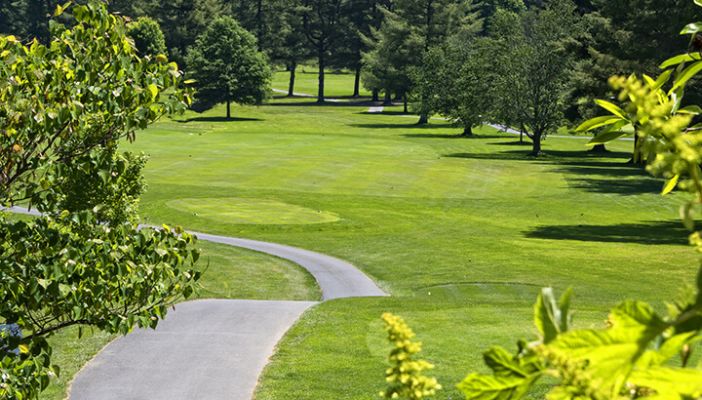The true home of golf is considered to be St. Andrew’s in Scotland, where the game is said to have first been played. The home of golf here in the United States, however, is North Carolina. More specifically, the Pinehurst area, where Donald Ross first designed many of the finest classic courses in the early 1900s.
With hundreds of miles of coastline, many different types of terrain and a golf-friendly climate, North Carolina is indeed a heaven for all golfers. If you’re a resident or are visiting for a golf vacation, you’re in luck. Below, we break down the 10 best places to play golf in North Carolina:
Lonnie Poole Golf Course
Arnold Palmer designed this epic track located on the campus of North Carolina State University. Lonnie Poole is unique in that it features five par 3s and offers a finishing hole that makes golfers feel like they’re at Pine Valley.
Duke University Golf Club
One of the nation’s best college campus golf courses, the golf club at Duke University is a Robert Trent Jones masterpiece that was more recently updated by his son Rees Jones. The course will test even the best golfers with tight, tree-covered fairways.
Tobacco Road
Simply put, the experience at Tobacco Road is like no other. Carved out of massive sandhills, Tobacco Road forces golfers to get creative and play outside of their comfort zone with massive greens, forced carries and numerous blind shots. Any trip to the Pinehurst area must include a stop in Sanford (about 20 minutes northeast of Pinehurst) to play Tobacco Road.
Dormie Club
Similarly to Tobacco Road, Dormie Club is another course in the Pinehurst area that doesn’t get its just due thanks to the sheer volume of top-notch courses in the region. Built in 2010, it’s definitely the new kid on the block. But thanks to designers Bill Coore and Ben Crenshaw, the Dormie Club carries with it a feel that you’re playing a classic.
Linville
Built by Donald Ross in the 1920s, Linville Golf Club is situated in the Western Carolina mountains. It is an entirely different experience than the other golf courses on our list. In order to play at Linville, you must stay at the Esseola Lodge. The course itself travels through rolling hills and features elevation changes that impact many of its holes.
Pinehurst No. 4
One of nine courses at the famed Pinehurst Resort, No. 4 was originally designed by Donald Ross. It was refurbished in 2000 by Tom Fazio and stands out as a must-play when visiting the Pinehurst area.
Mid Pines Golf Club
One of two courses at the Pine Needles Mid Pines complex, Mid Pines Golf Club underwent a massive redesign in 2014. The project was centered around restoring, rather than rebuilding. The details from original course designer Donald Ross still remain.
Pinehurst No. 8
Raised in 1996, Pinehurst No. 8 covers 420 acres of rolling terrain at the Pinehurst Resort. It was built by Tom Fazio, who aimed to replicate the uniqueness of Donald Ross’ original designs at the resort nearly 100 years before him.
Pine Needles
Host of multiple U.S. Women’s Opens, Pine Needles is a tremendous facility. It offers a similar experience to Pinehurst No. 2 — albeit far less challenging. Pine Needles takes golfers through a series of long par 4s and attainable par 5s lined by towering pines. The facility is owned and operated by Peggy Kirk Bell, a longtime golf professional.
Pinehurst No. 2
On the golf bucket list of nearly every golfer, Pinehurst No. 2 is one of the world’s most notorious golf courses. Like many of the region’s best courses, No. 2 was designed by Donald Ross. In 2011, it was restored by the duo of Bill Coore and Ben Crenshaw ahead of hosting the 2014 U.S. Open — the third held at Pinehurst No. 2.
The course is classic in every sense with trees lining each and every hole. Depending on which tees you play, it can get lengthy. But regardless of the distance at which you play the course, how you handle the many tight lies and tough chipping conditions around the green will decide how you fare.
— Ben Larsen
